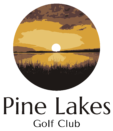As a Blog writer for a popular Golf magazine and a Myrtle Beach local, I take pride in shedding light on the glittering, graceful, and gold-covered golf tales of our vivacious past. Today, I’ll be taking a nostalgic trip back to the “Roaring Twenties”: the era that saw the rise of Pine Lakes Golf Course, one of the historic icons in the annals of American golf.
Titled the “Granddaddy” of Myrtle Beach golf, Pine Lakes Influence can’t be understated. They say, if you want to see golf history seep through every tuft of grass, every bunker, and each tall pine, you must tee off once at Pine Lakes.
So, what makes the Pine Lakes Course such an indomitable giant in golfing history? Perhaps it’s the course’s alluring charm that draws us back to the golden age of the 1920s, a time when golf was still carving its niche as a beloved leisure sport. Maybe it’s the bold and innovative architect, Robert White, the first president of the Professional Golfers Association (PGA) of America and a co-founder of the American Society of Golf Course Architects, whose magnificence crafted the Pine Lake course with a design philosophy that is both inclusive and challenging for golfers of all skill levels.
To quote the club’s architect, Nicholas B. Sottile Jr., “Golf course designs today mimic Pine Lakes’ original layout.” Its pioneering spirit was first unveiled in 1927, and the course has stayed true to its Scottish theme, incorporating elements such as rolling fairways that draw inspiration from the landscape of Scotland – the birthplace of golf.
But Pine Lakes is not just known for its architectural brilliance and Scottish influence. It played a significant role in shaping golf as a spectator sport. The inception of golf broadcasting happened right here. The second floor of the clubhouse of Pine Lakes is hallowed ground in the annals of golfing. This spot is where, in 1954, Time Inc. pioneers conceived and created Sports Illustrated Magazine. Yes, folks, the first issue of one of America’s most notable sports publications hit the stands thanks to several strategic planning sessions on these historic grounds.
Pine Lakes also boasts of history a little less tangential to golf. Amidst the lush green and sticking true to the charm of the Roaring Twenties, Pine Lakes prides itself on being a central gathering point for Myrtle Beach’s sophisticated crowds who would throng to the club to enjoy lavish banquets and prestigious parties. It’s where the local glitterati would mingle, puffing on fine cigars and sipping on the choicest of whiskeys- encapsulating the voluptuous, prosperous, and progressive spirit of the 20s.
Today, as Pine Lakes Golf Course continues to shine, it does so bearing homage to its history. After its meticulously planned restoration in 2008, golfers can now enjoy modern golfing facilities while relishing the course’s vintage charm. In 2009, the course reopened, adhering to Robert White’s original layout while introducing Seashore Paspalum grass to fairways for a more sustainable future.
The idyllic charm of Southern architecture, the mesmerizing 1920s vibe, the Scottish theme, and an outstanding sporting history make Pine Lakes more than just a golf course; it’s a time capsule that offers us a glimpse into the roaring golfing yesteryears. As Tom Bendelow, the world-renowned golf architect, aptly puts it, “When you’re playing Pine Lakes, you feel you’re walking through a golf museum.”
Indeed, as we tee off at Pine Lakes today, we are not just striking a ball, but we are also striking a part of the rich tapestry of the roaring 1920s, realizing the vision of Robert White, and contributing to the legacy of a sport that captivates millions across the globe. The echoes of the Roaring Twenties still resonate here, embedding Pine Lakes firmly in the annals of golfing history.
